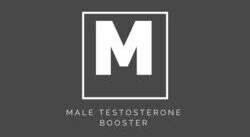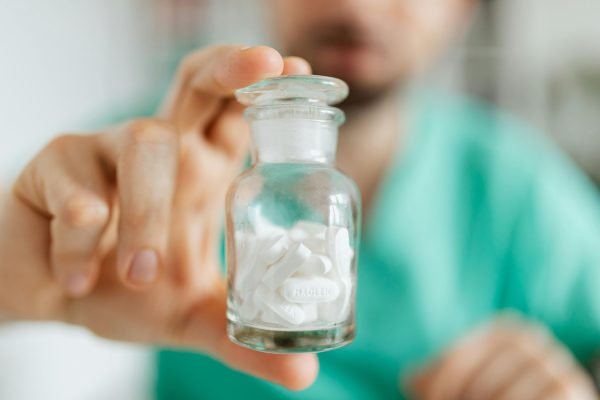- What we know about Testosterone
- Testosterone deficiency in any age
- Why would you need a testosterone test?
- Circadian Rhythm and Average Testosterone Levels by Age
- When is the best time to take a testosterone test?
- Low testosterone levels
- The average annual decrease in T levels
- Andropause symptoms
- Conclusion
- FAQs: Testosterone Levels
- Question: Is a testosterone level of 500 considered good?
- Question: What is the average testosterone level for a 50-year-old male?
- Question: What is a normal testosterone level for a 45-year-old male?
- Question: What is the average testosterone level for a 30-year-old male?
- Question: Is a testosterone level of 700 considered high?
- Question: Is a testosterone level of 800 considered good?
- Question: Is a testosterone level of 1000 too high?
- Question: Is a testosterone level of 1800 too high?
- Question: Is a testosterone level of 1100 too high?
What we know about Testosterone
In men, testosterone, the principal circulating androgen, has essential reproductive functions in establishing and maintaining the male phenotype. It is very closely associated with the male sex drive and has a major role here.
Before we’ll start talking about the average testosterone levels by age, let’s understand the critical role of testosterone.
Testosterone helps to regulate metabolism and is sometimes called the anabolic hormone as it stimulates protein anabolism. This means it helps turn protein into far more complex chemicals. This process is the opposite of catabolism, which is the digestive process. In doing this, it promotes the growth of muscles and bones.
Testosterone level affects the way men store fat in their bodies.
A man’s mood is often influenced by his testosterone levels. Testosterone is what drives many men in sports, business, work, and life.
The manufacture of testosterone is minimal pre-puberty but increases massively during puberty, and declines after the ages of 30-35.
Testosterone deficiency in any age
Organic hypogonadism, also known as testosterone deficiency, – resulting from structural hypothalamic-pituitary-testicular (HPT) axis dysfunction is an important diagnosis not to be missed.
It is an important difference to consider not only in the man presenting with low libido or infertility, but also with non-reproductive features such as otherwise unexplained weakness, anemia, or osteoporosis.
Hypogonadism is primarily a clinical diagnosis. Men with features suggestive of androgen deficiency should undergo a thorough examination to determine the degree of clinically significant androgen deficiency.
Verification of the clinical impression by confirming low testosterone levels is an essential component of the diagnosis.
The Endocrine Society recommends making a diagnosis of androgen deficiency only in men with consistent symptoms and signs as well as unequivocally and repeatedly low serum testosterone levels.
While the diagnosis is relatively straightforward in young, otherwise healthy men, it is considered more difficult in older, obese men with comorbidities.
Low libido, the most specific sexual symptom, can be caused by many other conditions such as vascular disease or depression, and the physical examination can be nonspecific.
In the European Male Ageing Study, where the prevalence of sexual symptoms ranged from 27.5 % to 39.9 % in community-dwelling men, yet only 2.1 % met the definition of late-onset hypogonadism.
Why would you need a testosterone test?
In adult men, the most common reason for measuring circulating testosterone is to confirm the clinical suspicion of androgen deficiency based on history and physical examination. Other indications may include monitoring the adequacy of testosterone therapy or of androgen deprivation therapy in men with prostate cancer.
In general, there is no indication for testosterone measurement in men without clinical evidence of androgen deficiency.
However, a measurement in the absence of symptoms may be justified in specific situations, such as in the work-up for secondary osteoporosis or unexplained anemia.
Testosterone is the main circulating androgen in men
The concentration of circulating testosterone does not necessarily reflect local hormones.
Concentration and biological effects in target tissues, also depend on the uptake and clearance from target tissues, interactions with receptors, and their activators.
Androgenic action may also be modulated by polymorphisms of the androgen receptor, sex hormone-binding globulin (SHBG), or steroid metabolizing enzymes, although their clinical significance remains contentious.
Testosterone is both a hormone and a prohormone
Testosterone is converted to dihydrotestosterone, a more potent androgen receptor agonist allowing local amplification of androgen actions (i.e., in the prostate gland and in the skin).
Testosterone is also aromatized to estradiol, and there is increasing evidence that biological actions traditionally attributed to testosterone may in fact be mediated by estradiol, such as regulation of bone mass, fat distribution, and insulin resistance.
A single point in time measurement may not be representative because of biological variability in testosterone levels, and because of technical assay limitations
Variability of Circulating Testosterone Levels
As a result of the pulsatility of hypothalamic gonadotropin-releasing hormone secretion, testosterone is secreted in a pulsatile manner.
But the amplitude is relatively low, with moment-to-moment fluctuations of less than 10–15 %, because of buffering effects of its carrier proteins SHBG and albumin.
Circadian Rhythm and Average Testosterone Levels by Age
There is circadian rhythmicity, and in men 30–40 years old, testosterone levels are 20–25 % lower at 16-00 – than at 08-00.
In fact, up to 15 % of healthy men can have abnormally low levels of testosterone within a 24 h period.
While some data suggest blunting of circadian rhythmicity with age, a significant proportion of men older than 65 years with low levels of testosterone in the afternoon will have normal levels in the morning.
When is the best time to take a testosterone test?
Testosterone levels should be measured before 10 am, regardless of age.
And preferably in fasting mode.
While current guidelines do not specify fasting, recent evidence suggests that food intake can abruptly reduce testosterone levels.
In one study of 66 healthy men, glucose ingestion was associated with a 25 % decrease in mean T levels, reducing testosterone levels to below the reference range in 15% of study subjects.
Fasting effect on testosterone levels
Consistent with these findings, an observational study of repeated testosterone measurements found that overnight fasting increased testosterone levels by 9 % This fasting effect was less pronounced, but still significant ) in men with a higher body mass index.
Day-to-day variability in testosterone level
There is also significant day-to-day variability in testosterone levels.
In a longitudinal study, the intra-individual variability of testosterone was up to 28 % when two measurements were made on a subject.
More than 30% of men with low testosterone will have normal levels when retested a few months later.
Disease impact on testosterone levels
Any acute illness or chronic illness, medications (e.g. glucocorticoids or opioids), obesity or malnutrition, and excessive exercise can decrease testosterone levels.
Can belly fat cause erectile dysfunction?
Visceral fat around the stomach may put someone at risk for chronic health diseases such as heart disease, diabetes, and erectile dysfunction.
Obesity reduces testosterone levels by 30%, and in the presence of two or more comorbidities,
the prevalence of late hypogonadism increases tenfold.
But there’s good news for you –
Conversely, weight loss and comorbidities optimization may lead to testosterone recovery.
Conditions such as type 2 diabetes mellitus, depression, obstructive sleep apnea, chronic kidney disease, or anorexia nervosa are associated with decreases in testosterone levels of between 2 and 10 nmol/L, depending on the severity of the condition.
Any illness can cause non-specific symptoms resembling those seen with true androgen deficiency.
There is evidence to show that the age-related accumulation of chronic disease and obesity, in particular, can accelerate the age-related decline in testosterone levels.
Healthy aging by itself may not inevitably be associated with marked decreases in testosterone levels.
In general, however, a repeatedly low testosterone level is more indicative of hypogonadism the younger, healthier, and leaner the man is, but much less predictive in older obese men with chronic disease and non-specific symptoms.
Low testosterone levels
In contrast to, for example bone density, where age-dependent reference ranges are defined quite well, there is no general agreement on the acceptable normal range of testosterone, particularly in older men.
This is because there have been relatively few large population-based studies of healthy older men.
A panel of US experts was divided on the total testosterone level below which to consider testosterone treatment, with opinions ranging from 6.9 to 10.4 nmol/L.
Joint recommendations from the International Society of Andrology and associated societies consider total testosterone levels between 8.0 and 12.1 nmol/L to represent a gray zone, whereas levels > 12.1 nmol/L are considered normal and <8.0 nmol/L, low.
Population-based studies in healthy Australian men reported lower limits for total testosterone of 9.8 nmol/L for healthy young men, and 6.4 nmol/L for older men reporting excellent health, measured by LC-MS/MS assay.
The US Federal Drug administration uses a testosterone threshold of 10.4 nmol/L, the value used to define hypogonadism for clinical trial purposes, without reference to age.
This is the threshold level most commonly (in 43 %) chosen by endocrinologists to offer treatment to older men presenting with symptoms compatible with androgen deficiency. This stresses the importance of providing robust reference ranges for older men so as to avoid overtreatment.
The average annual decrease in T levels
Several longitudinal studies have shown that aging is accompanied by a decrease in T levels.
The Baltimore Longitudinal Study showed that the average annual decrease in total T was 3.2 ng/dl in men older than 53 years, representing approximately 1 % per year for a normal lower limit of 325 ng/dl.
The rate of fall in serum T with age varies among individuals
and
is affected by chronic diseases and medications.
Aging is also accompanied by an increase in the concentration of sex hormone-binding globulin (SHBG), whereby the concentration of free T (FT) is further reduced.
Age-related androgen deficiency may be exacerbated in the presence of abdominal obesity resulting in elevated estrogen levels and SHBG.
In some older men, this fall in T can lead to clinical signs and symptoms such as decreased libido, impotence, decreased growth of body hair, reduced muscle mass, fatigue, and decreased bone mass.
This situation has been described as androgen deficiency in the elderly male, andropause, or LOH (Late-onset hypogonadism).
The International Society of Andrology and the International Society for the Study of the Aging Male define LOH as a clinical and biochemical syndrome associated with advanced age and characterized by typical symptoms and a deficiency in serum T levels.
It may result in significant detriment in the quality of life and adversely affect the function of multiple organ systems.
Andropause symptoms
- loss of libido
- erectile dysfunction,
- decreased muscle mass and strength
- increased body fat
- decreased bone mineral density and osteoporosis
- decreased vitality
- depressed mood
None of these symptoms are specific to the low androgen state.
Conclusion
In conclusion, testosterone plays a crucial role in the male body, influencing various aspects of health and well-being. It regulates metabolism, promotes muscle and bone growth, affects fat distribution, and influences mood and sex drive. Testosterone deficiency, or hypogonadism, can occur at any age and has both reproductive and non-reproductive consequences. Diagnosing androgen deficiency requires careful evaluation of symptoms and signs, along with confirmation through testosterone level testing.
The measurement of testosterone levels is essential in diagnosing androgen deficiency, monitoring testosterone therapy, and evaluating certain medical conditions. However, the timing of the test is crucial, and it is recommended to measure testosterone levels in the morning before 10 am, preferably in a fasting state. Testosterone levels can vary throughout the day, and food intake can affect its measurement.
Various factors can impact testosterone levels, such as age, diseases, medications, obesity, and lifestyle factors. Aging is associated with a gradual decline in testosterone levels, with an average annual decrease of about 1%. Chronic diseases, especially those associated with abdominal obesity, can further exacerbate this decline.
Low testosterone levels can lead to symptoms commonly associated with andropause or late-onset hypogonadism, including reduced libido, erectile dysfunction, decreased muscle mass, increased body fat, decreased bone density, fatigue, and mood changes. However, these symptoms are not exclusive to testosterone deficiency and can be caused by other factors as well.
Further research is needed to establish clear reference ranges for testosterone levels, particularly in older men, to avoid overtreatment and ensure accurate diagnosis and appropriate management.
Understanding the average testosterone levels by age and the factors influencing them is essential for healthcare professionals and individuals seeking to optimize their health and well-being. By recognizing the role of testosterone and its impact on various aspects of life, we can better address and manage testosterone deficiency and its associated symptoms.
Overall, testosterone remains a vital hormone in men, contributing to their overall vitality, health, and quality of life.
Read more about a unique complex for potency and prostatitis
- Bhasin S, Cunningham GR, Hayes FJ, Matsumoto AM, Snyder PJ, Swerdloff RS, Montori VM. Testosterone therapy in men with androgen deficiency syndromes: an Endocrine Society clinical practice guideline. J Clin Endocrinol Metab. 2010;95:2536–59.
- Wu FC, Tajar A, Beynon JM, Pye SR, Silman AJ, Finn JD, O’Neill TW, Bartfai G, Casanueva FF, Forti G, Giwercman A, Han TS, Kula K, Lean ME, Pendleton N, Punab M, Boonen S, Vanderschueren D, Labrie F, Huhtaniemi IT. Identification of late-onset hypogonadism in middle-aged and elderly men. N Engl J Med. 2010;363:123–35.
- Grossmann M, Hoermann R, Wittert G, Yeap BB. Effects of testosterone treatment on glucose metabolism and symptoms in men with type 2 diabetes and the metabolic syndrome: a systematic review and meta-analysis of randomized controlled clinical trials. Clin Endocrinol (Oxf). 2015;83:344.
- Finkelstein JS, Lee H, Burnett-Bowie SA, Pallais JC, Yu EW, Borges LF, Jones BF, Barry CV, Wulczyn KE, Thomas BJ, Leder BZ. Gonadal steroids and body composition, strength, and sexual function in men. N Engl J Med. 2013;369:1011–22.
- Veldhuis JD, King JC, Urban RJ, Rogol AD, Evans WS, Kolp LA, Johnson ML. Operating characteristics of the male hypothalamic-pituitary-gonadal axis: pulsatile release of testosterone and follicle-stimulating hormone and their temporal coupling with luteinizing hormone. J Clin Endocrinol Metab. 1987;65:929–41.
- Bremner WJ, Vitiello MV, Prinz PN. Loss of circadian rhythmicity in blood testosterone levels with aging in normal men. J Clin Endocrinol Metab. 1983;56:1278–81.
- Brambilla DJ, Matsumoto AM, Araujo AB, McKinlay JB. The effect of diurnal variation on clinical measurement of serum testosterone and other sex hormone levels in men. J Clin Endocrinol Metab. 2009;94:907–13.
- Caronia LM, Dwyer AA, Hayden D, Amati F, Pitteloud N, Hayes FJ. An abrupt decrease in serum testosterone levels after an oral glucose load in men: implications for screening for hypogonadism. Clin Endocrinol (Oxf). 2013;78:291–6.
- Sartorius G, Spasevska S, Idan A, Turner L, Forbes E, Zamojska A, Allan CA, Ly LP, Conway AJ, McLachlan RI, Handelsman DJ. Serum testosterone, dihydrotestosterone, and estradiol concentrations in older men self-reporting very good health: the healthy man study. Clin Endocrinol (Oxf). 2012;77:755–63.
- Feldman HA, Longcope C, Derby CA, Johannes CB, Araujo AB, Coviello AD, et al. Age trends in the level of serum T and other hormones in middle-aged men: longitudinal results from the Massachusetts male aging study. J Clin Endocrinol Metab. 2002;87:589–98.
- Fernández-Balsells HM, Murad MH, Melanie L, Lampropulos JF, Albuquerque F, Erwin PJ, Bhasin S, Montori VM. Adverse effects of T therapy in adult men: a systematic review and meta-analysis. J Clin Endocrinol Metab. 2010;95:2560–75
- Ferrucci L, Maggio M, Bandinelli S, Basaria S, Lauretani F, Ble A, et al. Low T levels and the risk of anemia in older men and women. Arch Intern Med. 2006;166:1380–8
- Findlay JC, Place V, Snyder PJ. Treatment of primary hypogonadism in men by the transducer- maladministration of T. J Clin Endocrinol Metab. 1989;68:369–73.
FAQs: Testosterone Levels
Question: Is a testosterone level of 500 considered good?
A testosterone level of 500 ng/dL is within the normal range for adult men. However, optimal levels can vary depending on health, symptoms, and individual circumstances. Consult a healthcare professional for personalized advice.
Question: What is the average testosterone level for a 50-year-old male?
The average testosterone level for a 50-year-old male ranges from 300 to 900 ng/dL. Levels may decline with age, and individual variations exist. Consult a healthcare provider for more context.
Question: What is a normal testosterone level for a 45-year-old male?
Normal testosterone levels for a 45-year-old male typically fall between 300 and 850 ng/dL. Individual health and symptoms are important factors for interpretation.
Question: What is the average testosterone level for a 30-year-old male?
The average testosterone level for a 30-year-old male ranges from 350 to 950 ng/dL. Younger men generally have higher levels, but individual variations should be considered.
Question: Is a testosterone level of 700 considered high?
A testosterone level of 700 ng/dL is within the normal range and is not considered unusually high. Factors like age, health, and symptoms should guide interpretation.
Question: Is a testosterone level of 800 considered good?
Yes, a testosterone level of 800 ng/dL is considered healthy for adult men. Individual factors and symptoms should also be taken into account for a comprehensive assessment.
Question: Is a testosterone level of 1000 too high?
A testosterone level of 1000 ng/dL is within the normal range but near the upper limit. It’s not typically concerning unless accompanied by symptoms or health issues.
Question: Is a testosterone level of 1800 too high?
Yes, a testosterone level of 1800 ng/dL is above the normal range and may require further investigation. Consult a healthcare professional to determine potential causes.
Question: Is a testosterone level of 1100 too high?
A testosterone level of 1100 ng/dL is above the normal range and may need medical evaluation. A healthcare provider can help identify potential causes and recommend the best course of action.
How long can the average man stay erect [and how to stay longer]






You need to take part in a contest for one of the highest quality sites on the net. I am going to recommend this site!
A motivating discussion is definitely worth comment. I do believe that you ought to publish more about this subject, it may not be a taboo subject but usually people dont speak about these subjects. To the next! Kind regards!!
Top ,.. top top … post! Keep the good work on !
Top site ,.. amazaing post ! Just keep the work on !